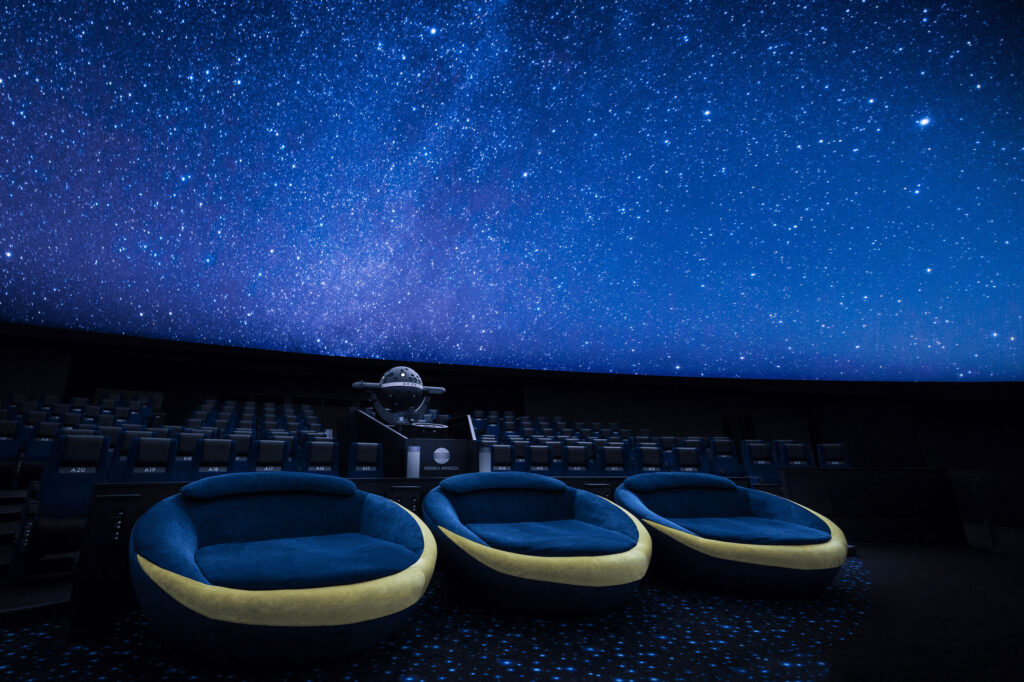Planetariums have always been fascinating places where audiences can explore the wonders of the universe. While the visual elements play an important role in creating these experiences, immersive sound systems have become equally important today as they add depth and realism to the journey through space. Immersive sound in planetariums turns a planetarium show into an all-encompassing sensory experience where the audience not only sees, but also hears and "feels" the cosmic journey.
Key features of immersive surround sound for planetariums
The development of 3D audio for planetariums has made remarkable progress. Organizations such as the Immersive Audio Committee of the International Planetarium Society have proposed technical specifications to serve as guidelines for the implementation of sound systems with maximum impact:
1. unadulterated sound reproduction
One of the key priorities is to reproduce crystal clear sound throughout the room. Planetariums often have complex acoustics due to the dome shape, and it is vital that every audience member hears the same level of detail regardless of their seating position. There should be no noticeable 'sweet spot' in the room; every seat should offer an equal sound experience.
2. low-noise design
A low-noise system means that a planetarium sound setup should operate without unintentional noise or distortion to ensure a quiet and undisturbed listening environment. This is crucial in planetariums, where subtle soundscapes and quiet moments are just as important as loud, dramatic interludes.
3. scalable systems for an immersive sound experience
Not every planetarium has the budget for large sound systems, so scalability is key. The immersive sound system should be able to deliver a highly engaging experience with a minimal number of speakers. This ensures that even smaller planetariums can deliver first-class sound without excessive costs.
4. integration with various projection systems
Flexibility is a cornerstone of the proposed specifications. The sound system must integrate seamlessly with a variety of projection systems, using a brand-independent variety of speakers. In this way, planetariums with different budgets and technical equipment can create an impressive audio experience without being locked into proprietary solutions.
5. compatibility with various audio formats
Immersive planetarium sound systems should be versatile and capable of converting and playing audio in a variety of formats, from mono to stereo to surround sound. This flexibility ensures that existing audio content can be adapted for immersive experiences without the need for extensive post-production or re-recording.
6. minimal delays during live events
Planetariums often host live lectures, musical performances or interactive events. To maintain audience engagement, it is crucial that the immersive sound system enables live audio with minimal delay. This ensures that the sound is synchronized with the visual elements and that the live performances appear natural and responsive.
7. 3D sound positioning, movement and size
In an immersive system, sound is not just about direction, but also about movement and size. In a 3D space, sound objects can be moved dynamically, giving the impression that sounds are flying through the dome. Even more impressively, sounds can have a 3D "size" that gives a sense of how far away or close a sound source is. This is particularly effective for visualizing large celestial events such as supernovae or the movement of planets.
8. scalable workflow and AR/VR compatibility
The system should be scalable in terms of workflow and take into account the increasing overlap of planetariums with augmented reality(AR) and virtual reality(VR). This flexibility will allow planetariums to stay at the forefront of technology adoption and provide audiences with more diverse, interactive experiences.
9. careful acoustic planning
The seating positions, the building materials used in the dome and the overall acoustics of the room must be carefully considered. The immersive sound system can only perform to its full potential if these factors are correctly assessed and matched to the technology used.
Summary
Immersive sound systems in planetariums are no longer a luxury - they are essential to deliver captivating and realistic experiences. By following the suggested specifications, planetariums of any size can create unforgettable audio experiences that complement the visuals and immerse audiences in the mysteries of the cosmos like never before.

You can find our immersive sound experiences for planetariums here.
